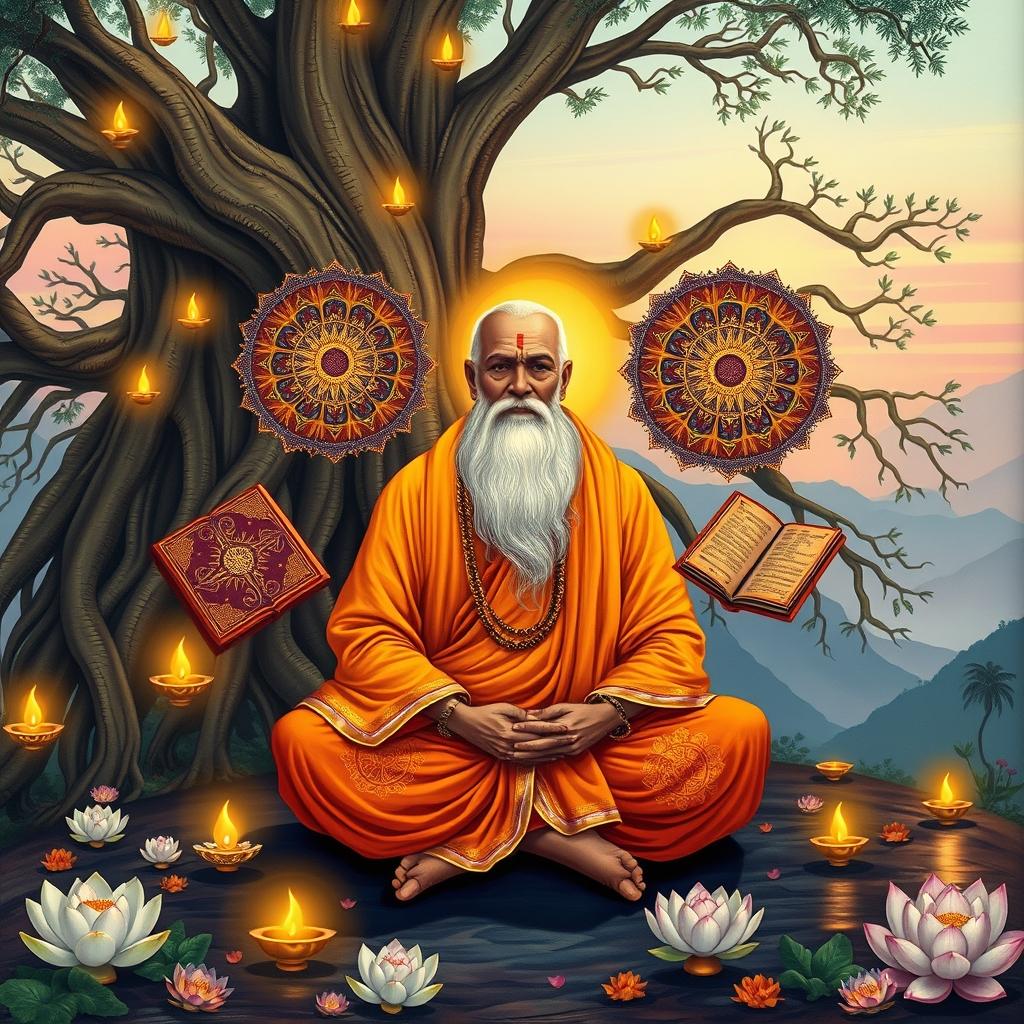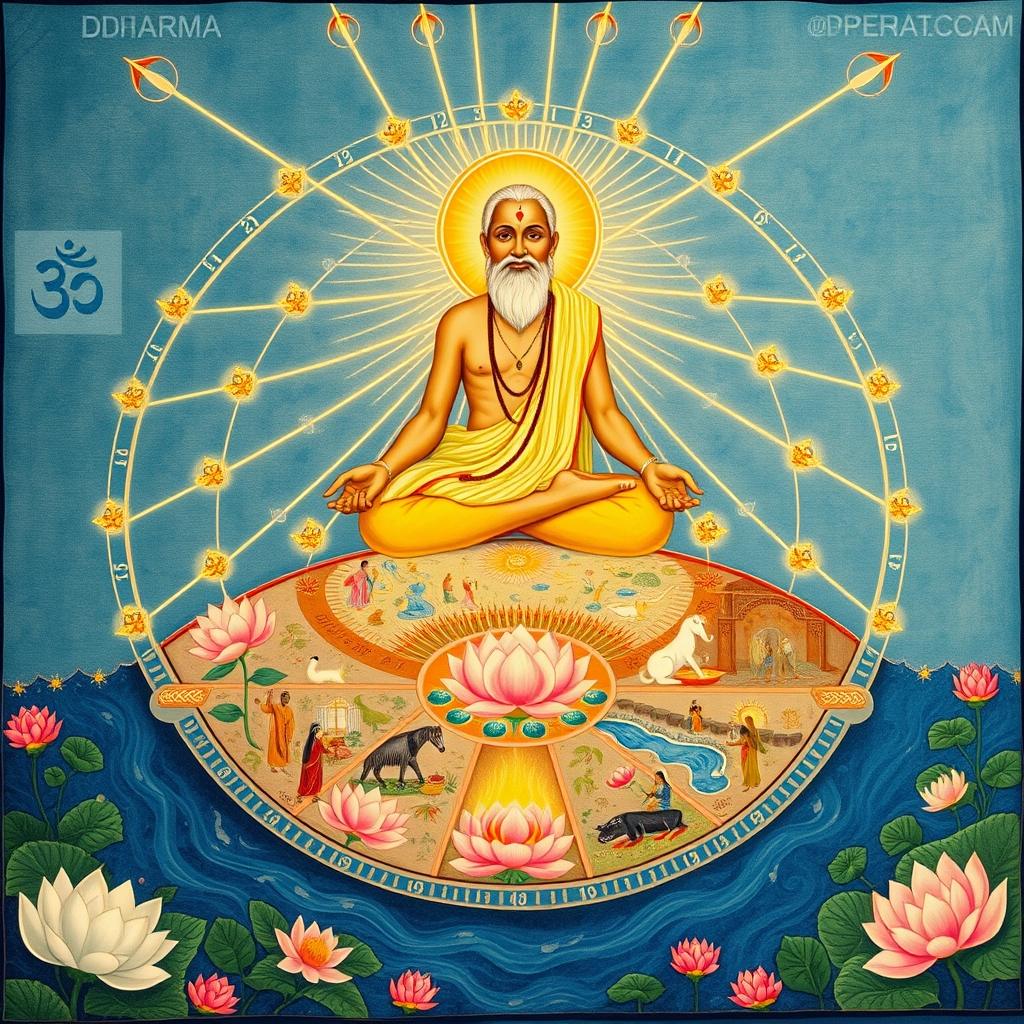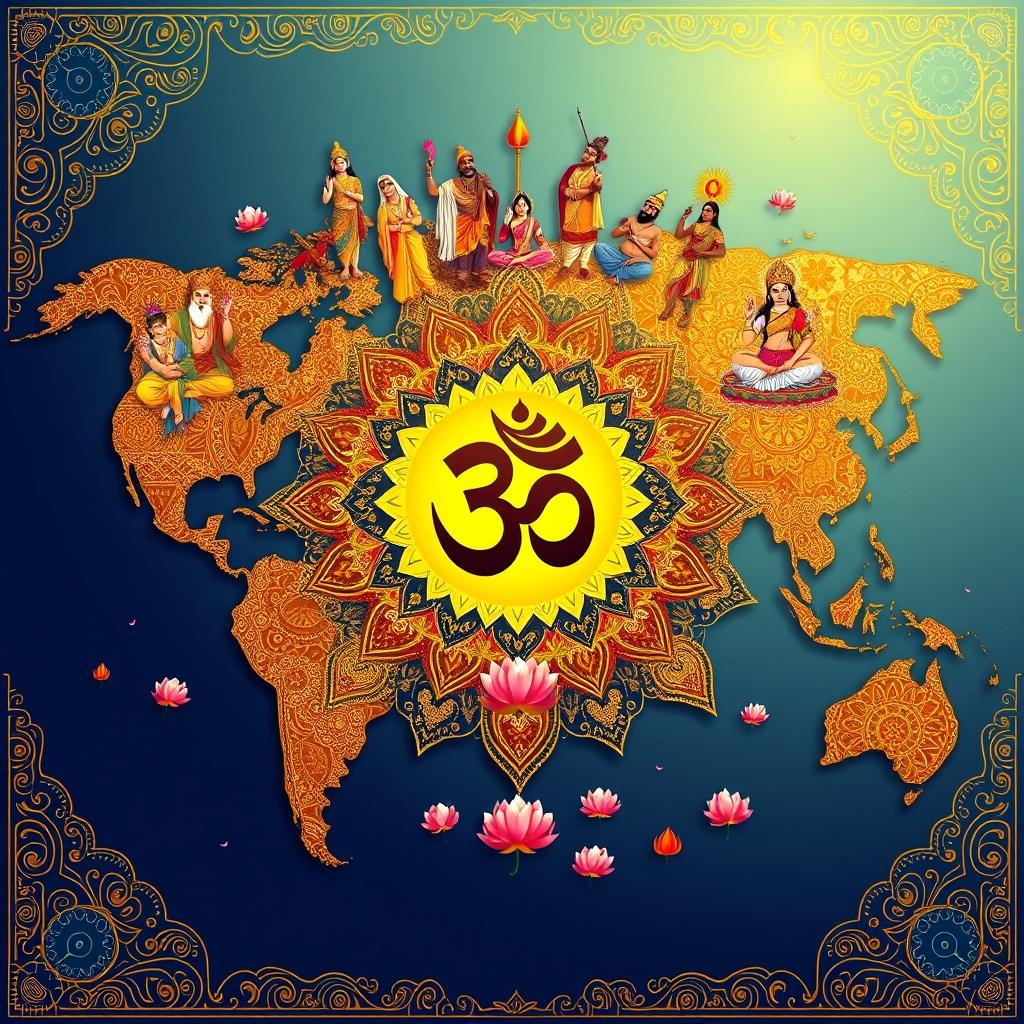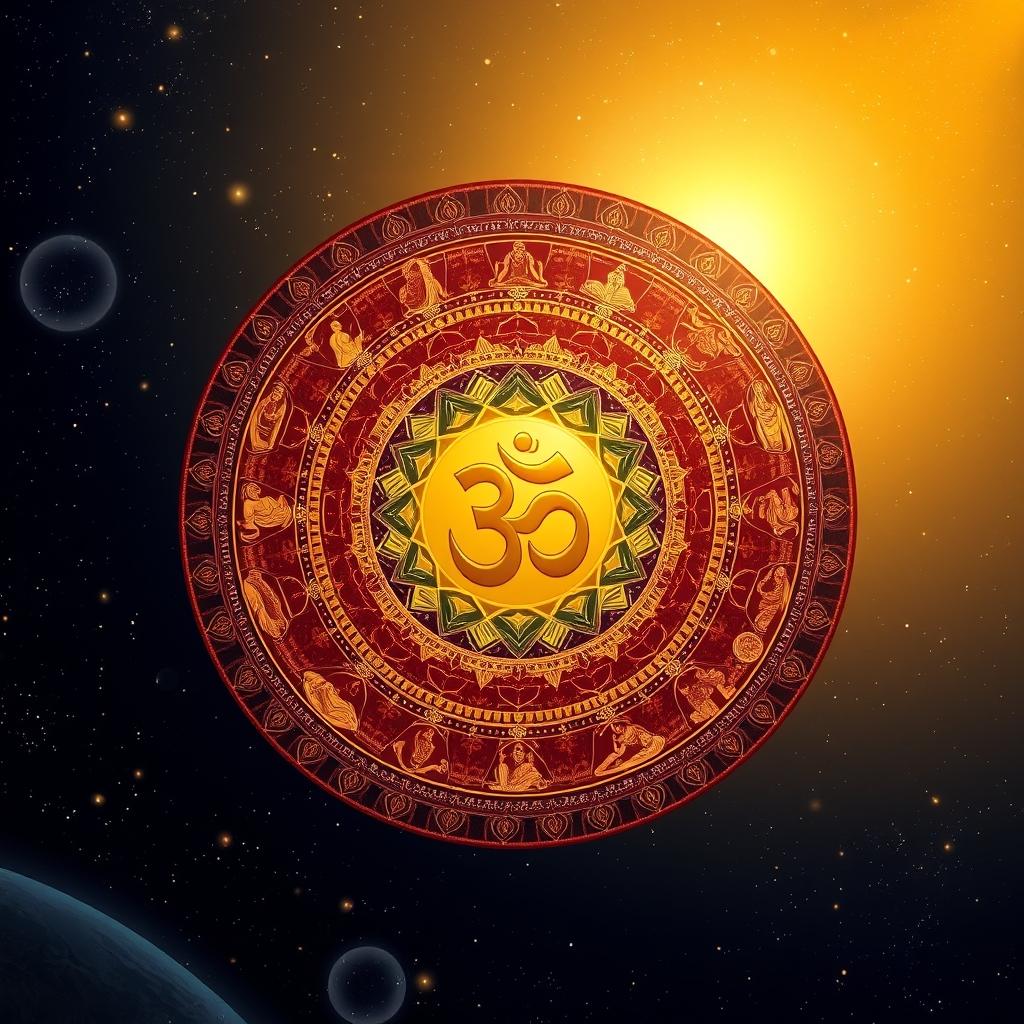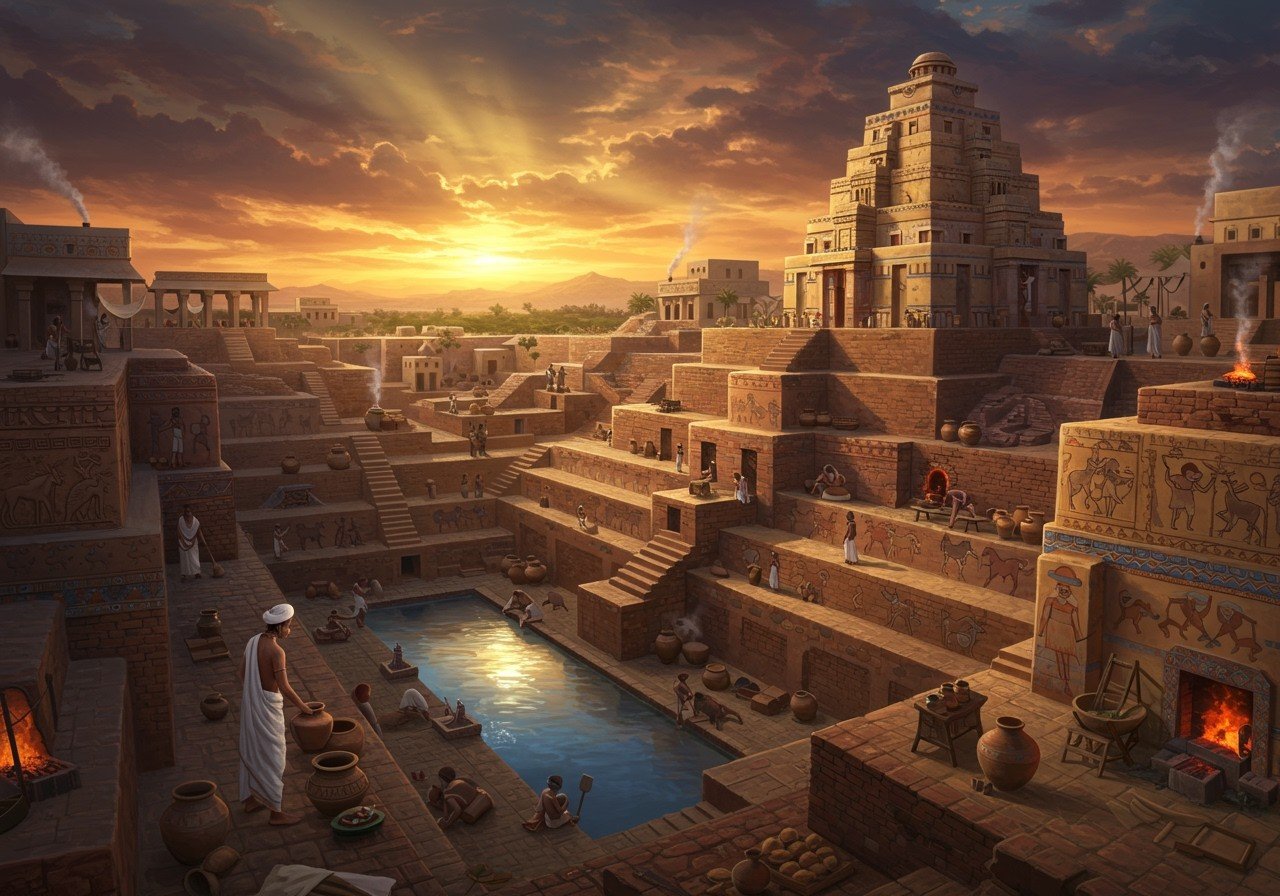
The Indus Valley Civilization, one of the world’s earliest urban societies, thrived around 2500 BCE in present-day Pakistan and northwest India. Renowned for its advanced urban design, extensive trade networks, and significant cultural advancements, this civilization played a pivotal role in shaping ancient societies. Let’s delve into the intricacies of life in the Indus Valley, examining its society, religious practices, and vibrant culture.
Society in the Indus Valley
The social structure of the Indus Valley Civilization was sophisticated and highly organized. Cities like Harappa and Mohenjo-daro exemplify advanced urban planning, featuring grid layouts and well-constructed buildings. Trade and commerce were essential, evidenced by trade routes and the exchange of goods with Mesopotamia.
The Great Bath of Mohenjo-daro demonstrates advanced water management and potentially ritualistic practices. Artifacts such as seals and pottery offer glimpses into occupational roles and social hierarchy. Standardized weights and measures highlight administrative efficiency. Residential structures reveal a society that valued privacy and organized housing. Women held significant roles, as suggested by figurines and inscriptions depicting their involvement in various societal activities.
Religion in the Indus Valley
Religious beliefs in the Indus Valley Civilization were diverse. Figurines and seals depict the worship of animals and fertility symbols. The Pashupati seal may represent a proto-Shiva figure, hinting at early forms of Hinduism. Evidence of fire altars and ritual objects suggests practices that influenced later Vedic traditions. Architectural remains point to possible temples or religious centers. Burial practices, including graves and cemeteries, offer insights into beliefs about life and death. Water played a crucial role in religious practices, as evidenced by the Great Bath and other water structures. Inscriptions and symbols on seals may have held religious or ritualistic significance.
Culture in the Indus Valley
The cultural aspects of the Indus Valley Civilization reveal a rich heritage. Evidence of cotton cultivation and textile production indicates advanced weaving techniques. Jewelry crafted from gold, silver, and semi-precious stones reflects aesthetic sensibilities and trade connections. Archaeological findings showcase a varied diet of grains, fruits, and animal bones. Pottery and ceramics display artistic skills through intricate designs and motifs. Recreational activities included games and musical instruments, offering insights into daily life and leisure. Architecture employed baked bricks and advanced building methods. Sculptures and carvings demonstrate high craftsmanship and cultural significance.
Key Facts about the Indus Valley Civilization
- Advanced Urban Planning: The civilization showcased meticulous urban planning, including grid layouts, sophisticated drainage systems, and standardized brick sizes. These features demonstrate a high level of organizational and engineering skill.
- Standardized Weights and Measures: The use of standardized weights and measures indicates a well-developed economic system and administrative control. This uniformity facilitated trade and commerce within the civilization.
- Extensive Trade Networks: Evidence of long-distance trade, supported by Indus seals discovered in Mesopotamia, highlights the civilization’s economic reach and interaction with other ancient cultures. This trade contributed to the exchange of goods and ideas.
- Undeciphered Script: The Indus script remains undeciphered, adding an aura of mystery to the civilization. Scholars continue to work on deciphering the script, which could unlock deeper understanding of their language and culture.
- Impressive Architecture: Structures like the Great Bath at Mohenjo-daro showcase impressive architectural skills. The precise construction and advanced engineering of such structures are remarkable for their time.
- Agricultural Expertise: The civilization successfully managed the annual floods of the Indus River, demonstrating advanced agricultural knowledge and water management techniques. This expertise ensured a stable food supply.
- Vast Geographical Extent: The Indus Valley Civilization, also known as the Indus-Sarasvati Civilization or Harappan Civilization, spanned an impressive 1,260,000 square kilometers. This vast area encompassed parts of modern-day India, Pakistan, Afghanistan, and other regions.
Religious Practices and Sacred Items in the Modern Context
The religious practices of the Indus Valley Civilization continue to resonate with modern Indian spirituality. Today, Poojn.in plays a vital role in preserving these ancient traditions by offering authentic holy idols and sacred food items essential for religious ceremonies.
At Poojn.in, you can find meticulously crafted holy idols that retain the spiritual essence of those used in ancient times. These idols serve as focal points for worship and meditation, much like they did during the Indus Valley period. Our collection includes deities made with traditional materials and adhering to sacred specifications. You can explore a variety of Lord Shiva statues, ideal for personal altars or spiritual practices, here, here, and here.
For those seeking to maintain the sanctity of religious offerings, Poojn.in provides a range of sacred food items, including camphor and camphor tablets, essential for various religious ceremonies and prasad offerings, connecting modern practices to ancient traditions.
FAQs on the Indus Valley Civilization
What was the religion of the Indus Valley Civilization? The religious beliefs of the Indus Valley people encompassed nature worship, reverence for fertility symbols, and possibly a mother goddess. Numerous figurines, seals, and structures suggest a range of religious practices.
What kind of clothing did people wear? Inhabitants of the Indus Valley wore simple, comfortable clothing made from cotton. Men typically wore a garment resembling a modern-day dhoti, while women draped a long cloth around their bodies.
What did people eat? Their diet included wheat, barley, rice, peas, sesame seeds, fruits, vegetables, dairy products, and meat. Spices were also used to enhance the flavor of their food.
How did they practice their religion? Religious practices involved rituals, offerings, and potentially worship at home or in public spaces like the Great Bath. Seals and figurines suggest rituals involving animals and elements of nature.
What materials were used for clothing? Clothing was primarily made from cotton, which was cultivated, spun, and woven into cloth within the civilization.
Did they have specific food-related rituals? While specific food rituals aren’t clearly documented, granaries and large storage areas suggest the importance of food in their society, possibly including rituals and communal gatherings.
What were the main features of their culture? Key cultural features include advanced urban planning, standardized weights and measures, extensive trade networks, and a system of writing. Art, pottery, and jewelry also played significant roles.
How was their religion different from other ancient civilizations? The Indus Valley religion focused more on nature and fertility symbols, contrasting with other ancient civilizations that had more defined pantheons of gods and elaborate mythologies. The absence of large temples suggests a more personal or community-based form of worship.
Conclusion
The Indus Valley Civilization stands as a testament to the ingenuity and sophistication of our ancestors. Its well-planned cities, advanced trade systems, and rich cultural heritage reflect a society that valued organization, creativity, and tradition. Learning about this civilization deepens our appreciation for our history and the foundations of our current traditions. As we continue to uncover more about this ancient world, we honor its lasting legacy.
Explore more about Hinduism with these insightful articles:
- Sacred Texts of Hinduism: A Guide to Key Scriptures
- Dharma and Karma in Hinduism Explained
- Hinduism’s Global Reach: A Look at its Diverse Traditions
- Hinduism: A Complete History and Origin
